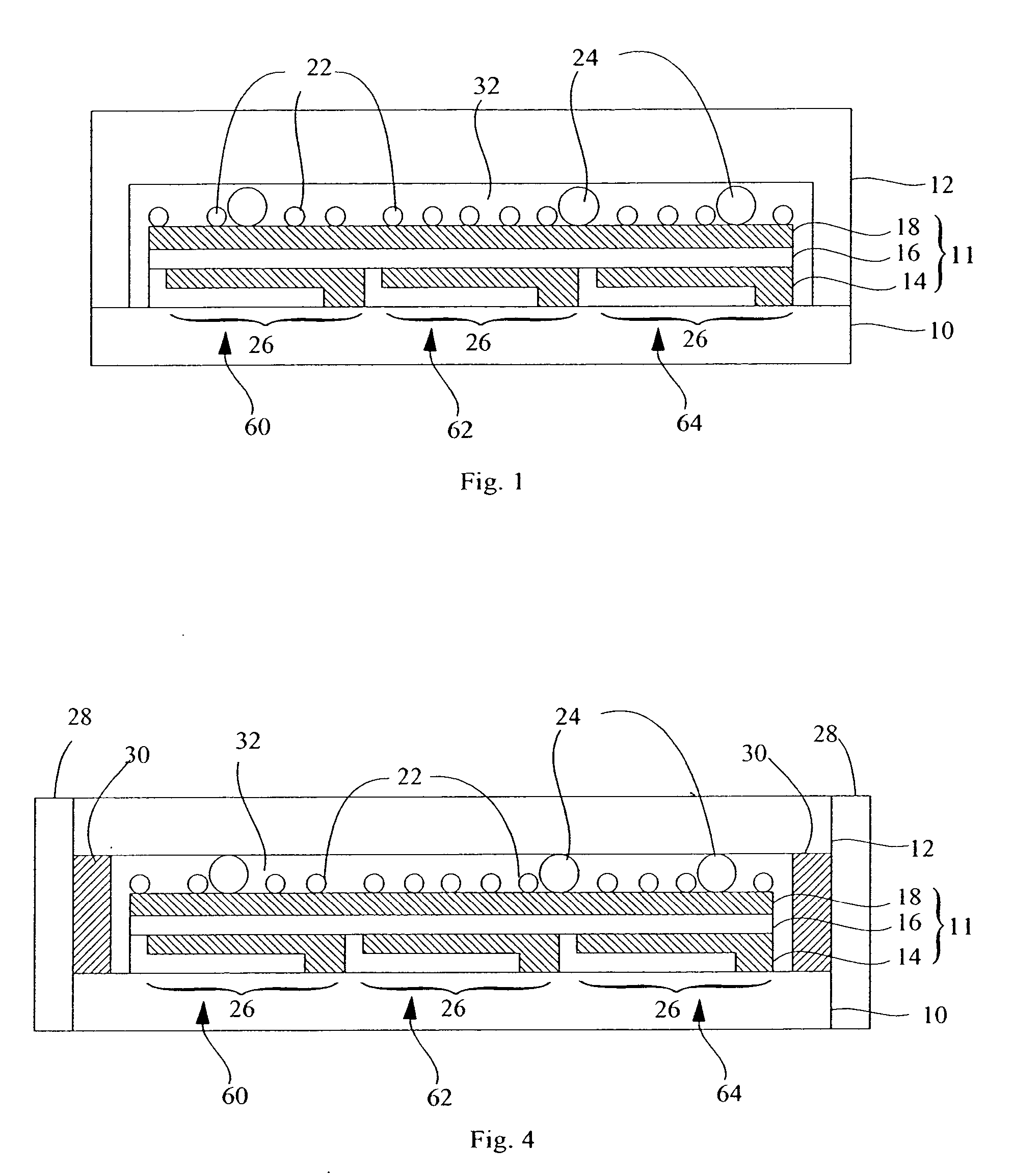OLED device with improved efficiency and robustness
a light-emitting diode and oled technology, applied in the direction of organic semiconductor devices, discharge tubes/lamp details, discharge tubes luminescnet screens, etc., can solve the problems of limiting the efficiency of oled devices, inefficiency in extracting photons generated by, and the majority of photons generated by recombination process are actually trapped in devices, so as to improve the robustness and performance of oled devices, and reduce manufacturing costs
- Summary
- Abstract
- Description
- Claims
- Application Information
AI Technical Summary
Benefits of technology
Problems solved by technology
Method used
Image
Examples
Embodiment Construction
[0032] Referring to FIG. 1, in accordance with the present invention an organic light-emitting diode (OLED) device comprises a substrate 10; an OLED 11 formed on the substrate 10 comprising a first electrode 14 formed over the substrate, one or more layers of organic material 16, one of which is light emitting, formed over the first electrode 14, and a transparent second electrode 18 formed over the one or more layers of organic material 16, the transparent second electrode and layer(s) of organic light-emitting material having a first refractive index range; a transparent cover 12 provided over the OLED 11 through which light from the OLED is emitted, the cover having a second refractive index; separately formed spacer element particles 24 having a first average size distributed above the transparent second electrode 18, providing spacing between the transparent second electrode 18 and the cover 12, and forming a transparent gap 32 between the transparent second electrode and the c...
PUM
 Login to View More
Login to View More Abstract
Description
Claims
Application Information
 Login to View More
Login to View More - R&D
- Intellectual Property
- Life Sciences
- Materials
- Tech Scout
- Unparalleled Data Quality
- Higher Quality Content
- 60% Fewer Hallucinations
Browse by: Latest US Patents, China's latest patents, Technical Efficacy Thesaurus, Application Domain, Technology Topic, Popular Technical Reports.
© 2025 PatSnap. All rights reserved.Legal|Privacy policy|Modern Slavery Act Transparency Statement|Sitemap|About US| Contact US: help@patsnap.com



